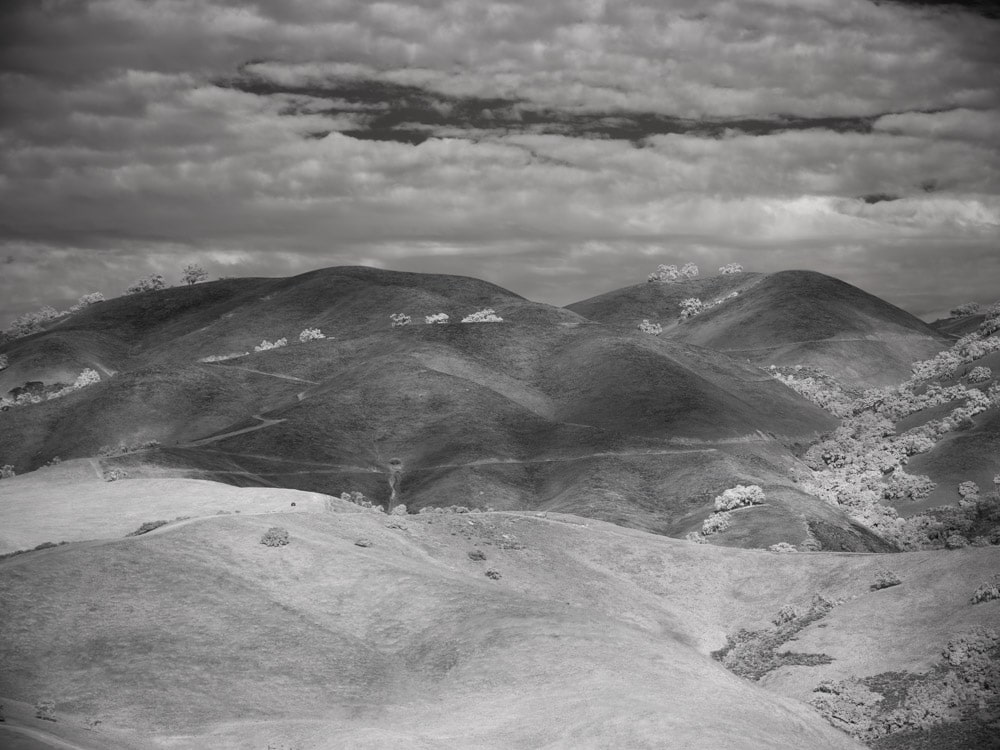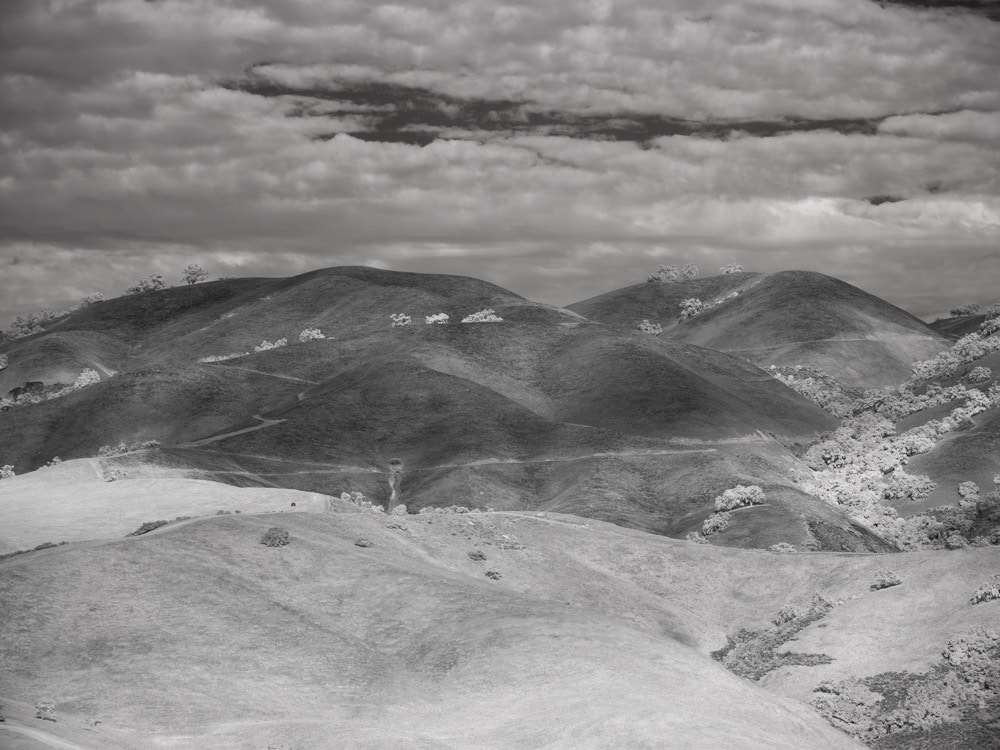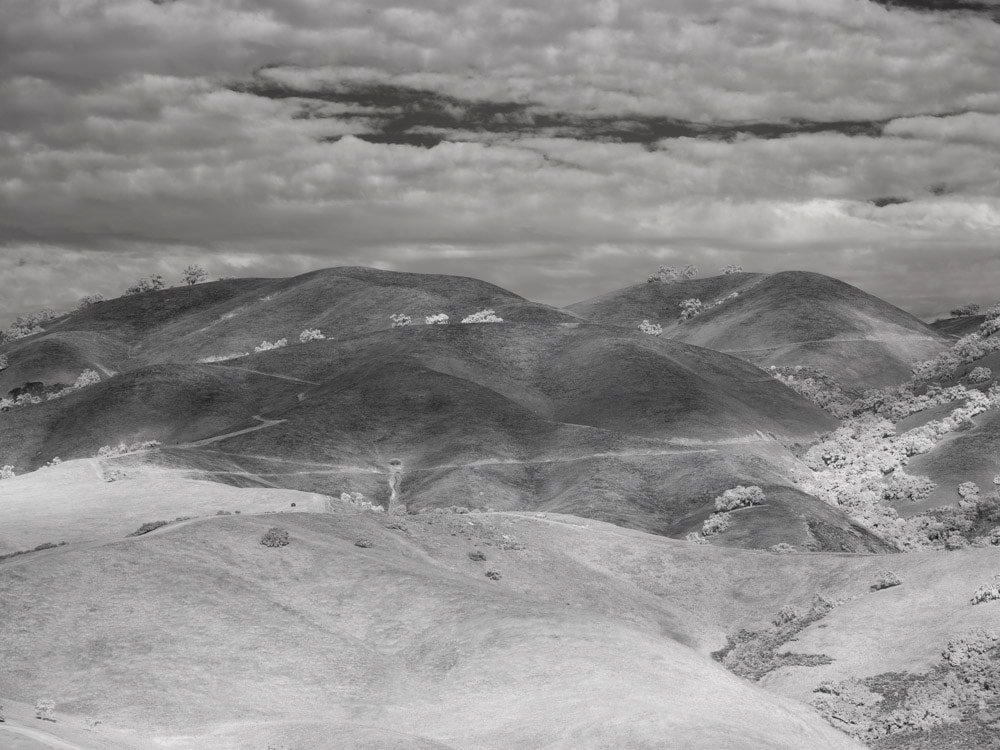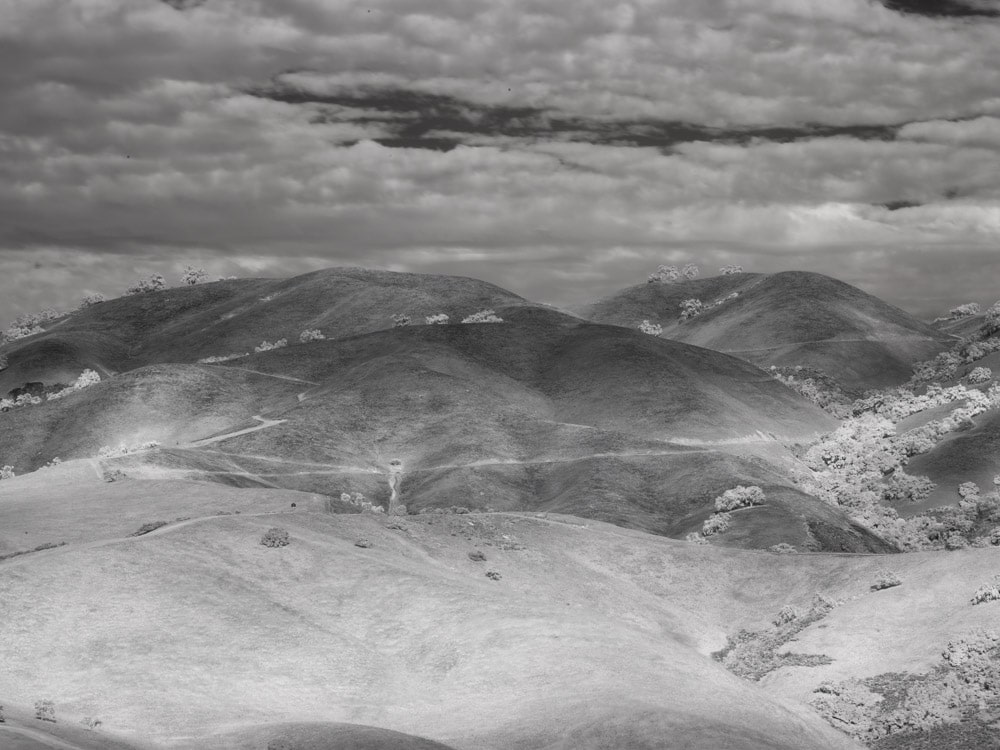I tested my LifePixel-modified (720 nm option) Fujifilm GFX 50R with the Leica 280 mm f/4 Apo-Telyt R lens and a 950 nm lowpass filter. I added a +100 contrast boost in Lightroom.

Poor coverage, no hotspots.

Still has corner vignetting. No hotspots.

A little bit of corner vignetting. No hotspots.

No corner vignetting. No hotspots.

Ditto.

Same.
I guess the question is going to be whether to use the lens at f/8 and deal with the slight vignetting, or to use it at f/11 and suffer the diffraction, which is about twice as bad at 950 nm as it is in visible light. I’m thinking that f/8 is the plan.
If you crop 2×3 I guess 5.6 must be OK. The residual vigneting looks pleasant and seems to be easily counteracted in post. The question should be how much the image degrades beyond the factory projected image circle, but that you can check with your usual tests.
I was thinking that it would be good for square crops. As to image degradation, it’s easier for diffraction to be the long pole in the tent at 950 nm than at 550.